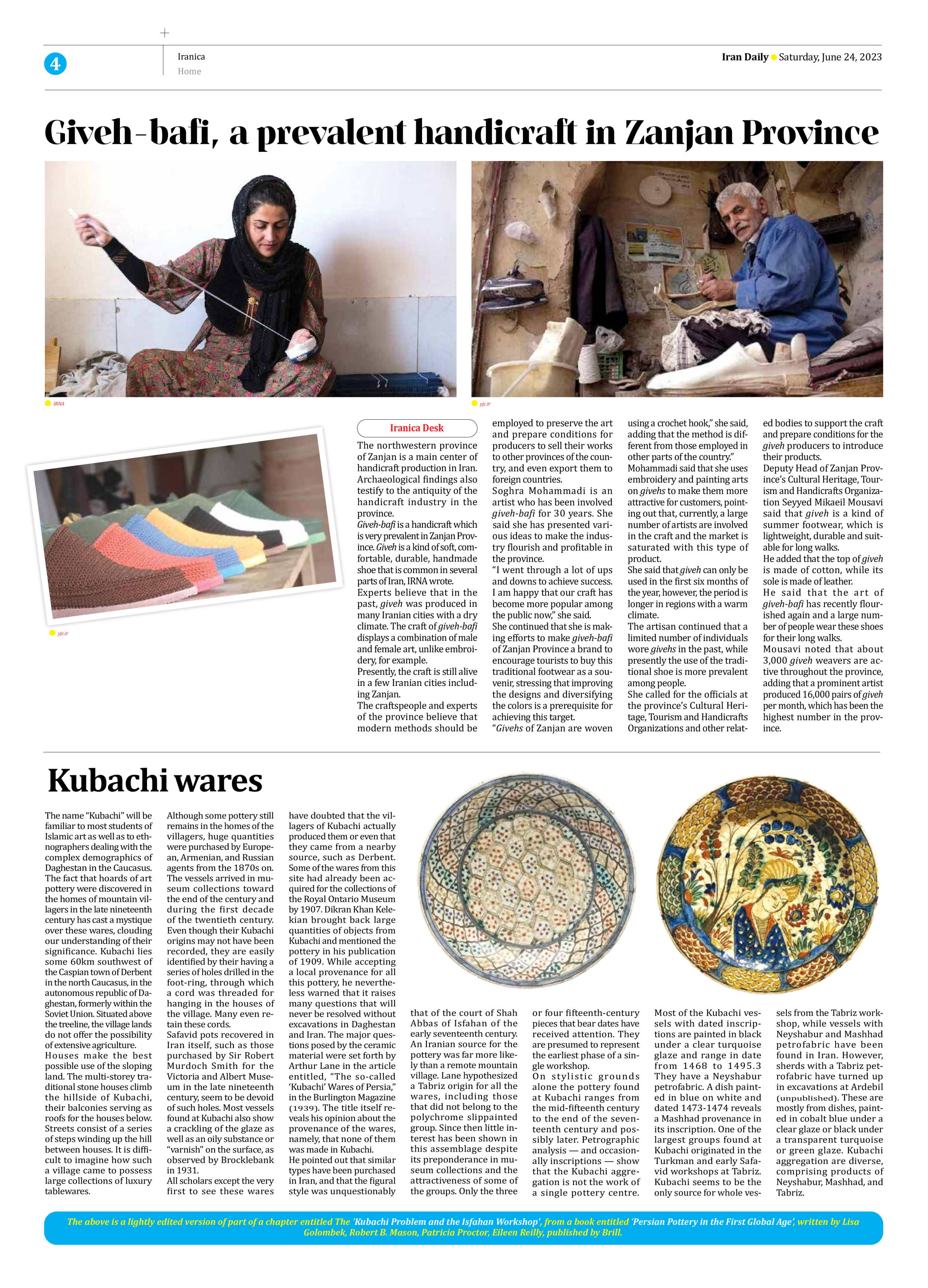
Kubachi wares
The name “Kubachi” will be familiar to most students of Islamic art as well as to ethnographers dealing with the complex demographics of Daghestan in the Caucasus. The fact that hoards of art pottery were discovered in the homes of mountain villagers in the late nineteenth century has cast a mystique over these wares, clouding our understanding of their significance. Kubachi lies some 60km southwest of the Caspian town of Derbent in the north Caucasus, in the autonomous republic of Daghestan, formerly within the Soviet Union. Situated above the treeline, the village lands do not offer the possibility of extensive agriculture.
Houses make the best possible use of the sloping land. The multi-storey traditional stone houses climb the hillside of Kubachi, their balconies serving as roofs for the houses below. Streets consist of a series of steps winding up the hill between houses. It is difficult to imagine how such a village came to possess large collections of luxury tablewares.
Although some pottery still remains in the homes of the villagers, huge quantities were purchased by European, Armenian, and Russian agents from the 1870s on. The vessels arrived in museum collections toward the end of the century and during the first decade of the twentieth century. Even though their Kubachi origins may not have been recorded, they are easily identified by their having a series of holes drilled in the foot-ring, through which a cord was threaded for hanging in the houses of the village. Many even retain these cords.
Safavid pots recovered in Iran itself, such as those purchased by Sir Robert Murdoch Smith for the Victoria and Albert Museum in the late nineteenth century, seem to be devoid of such holes. Most vessels found at Kubachi also show a crackling of the glaze as well as an oily substance or “varnish” on the surface, as observed by Brocklebank in 1931.
All scholars except the very first to see these wares have doubted that the villagers of Kubachi actually produced them or even that they came from a nearby source, such as Derbent. Some of the wares from this site had already been acquired for the collections of the Royal Ontario Museum by 1907. Dikran Khan Kelekian brought back large quantities of objects from Kubachi and mentioned the pottery in his publication of 1909. While accepting a local provenance for all this pottery, he nevertheless warned that it raises many questions that will never be resolved without excavations in Daghestan and Iran. The major questions posed by the ceramic material were set forth by Arthur Lane in the article entitled, “The so-called ‘Kubachi’ Wares of Persia,” in the Burlington Magazine (1939). The title itself reveals his opinion about the provenance of the wares, namely, that none of them was made in Kubachi.
He pointed out that similar types have been purchased in Iran, and that the figural style was unquestionably that of the court of Shah Abbas of Isfahan of the early seventeenth century. An Iranian source for the pottery was far more likely than a remote mountain village. Lane hypothesized a Tabriz origin for all the wares, including those that did not belong to the polychrome slippainted group. Since then little interest has been shown in this assemblage despite its preponderance in museum collections and the attractiveness of some of the groups. Only the three or four fifteenth-century pieces that bear dates have received attention. They are presumed to represent the earliest phase of a single workshop.
On stylistic grounds alone the pottery found at Kubachi ranges from the mid-fifteenth century to the end of the seventeenth century and possibly later. Petrographic analysis — and occasionally inscriptions — show that the Kubachi aggregation is not the work of a single pottery centre. Most of the Kubachi vessels with dated inscriptions are painted in black under a clear turquoise glaze and range in date from 1468 to 1495.3 They have a Neyshabur petrofabric. A dish painted in blue on white and dated 1473-1474 reveals a Mashhad provenance in its inscription. One of the largest groups found at Kubachi originated in the Turkman and early Safavid workshops at Tabriz. Kubachi seems to be the only source for whole vessels from the Tabriz workshop, while vessels with Neyshabur and Mashhad petrofabric have been found in Iran. However, sherds with a Tabriz petrofabric have turned up in excavations at Ardebil (unpublished). These are mostly from dishes, painted in cobalt blue under a clear glaze or black under a transparent turquoise or green glaze. Kubachi aggregation are diverse, comprising products of Neyshabur, Mashhad, and Tabriz.
The above is a lightly edited version of part of a chapter entitled The 'Kubachi Problem and the Isfahan Workshop', from a book entitled ‘Persian Pottery in the First Global Age’, written by Lisa Golombek, Robert B. Mason, Patricia Proctor, Eileen Reilly, published by Brill.







